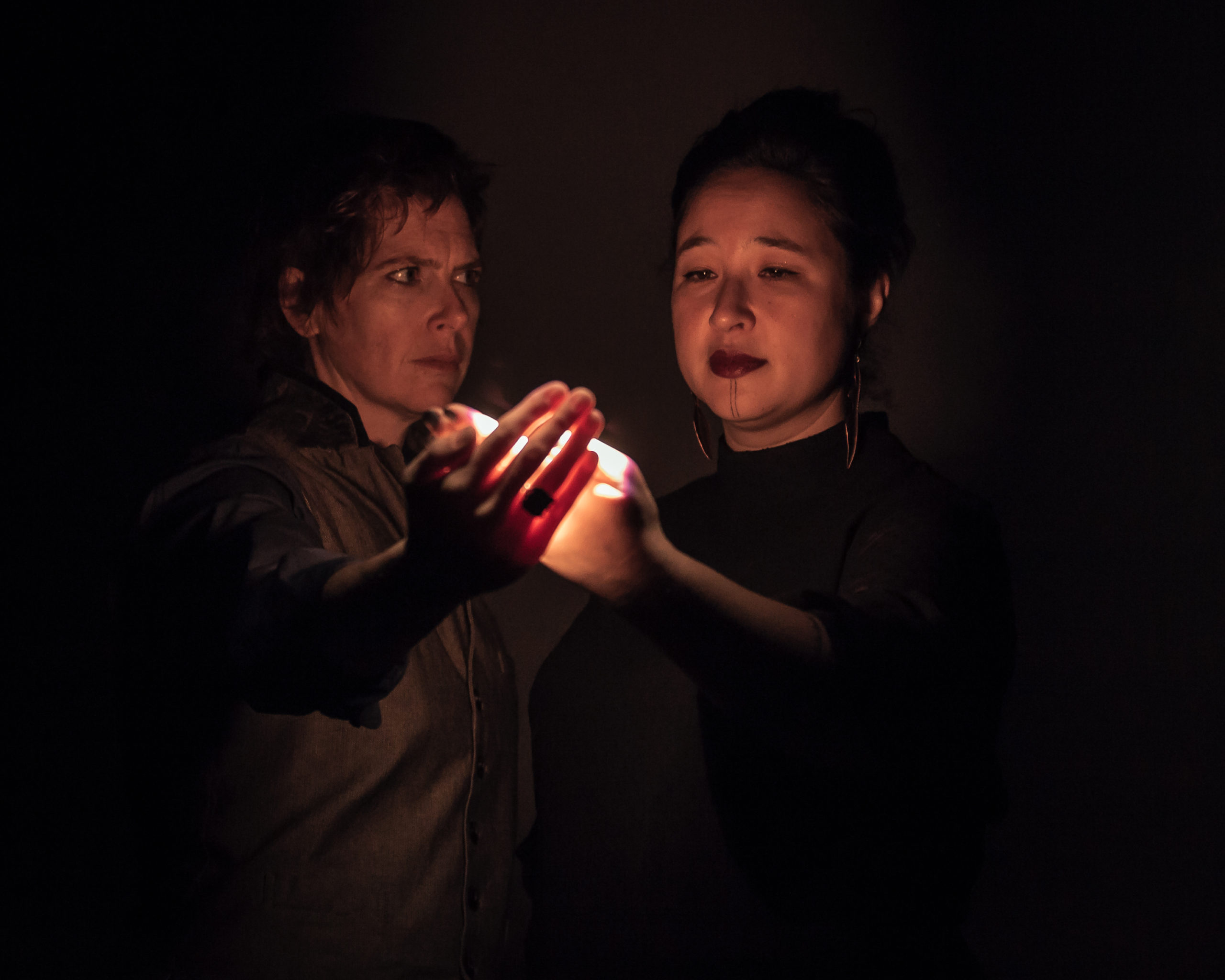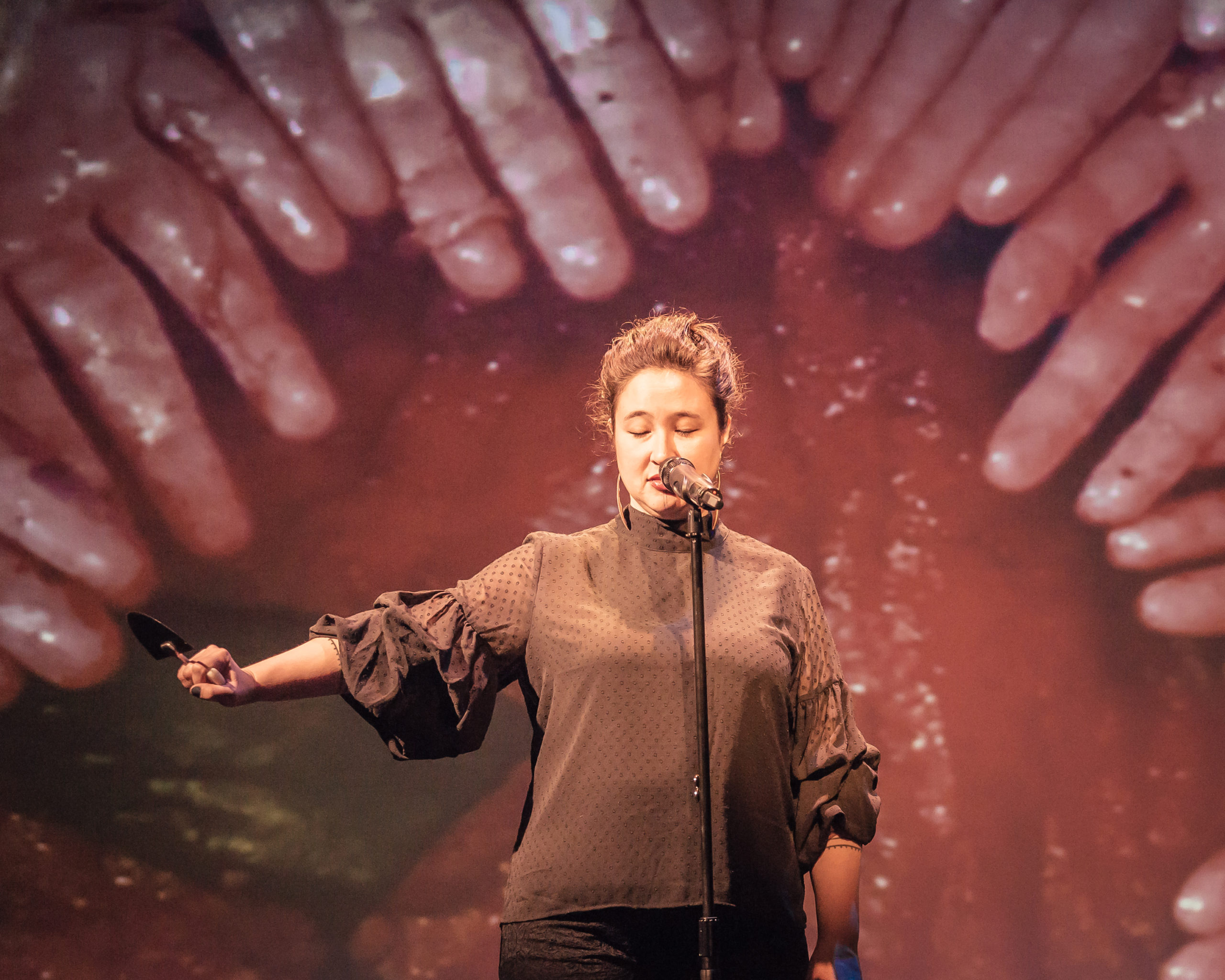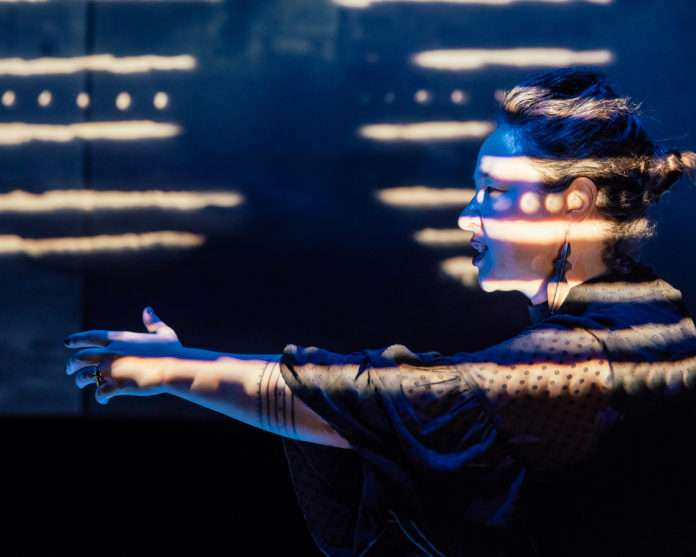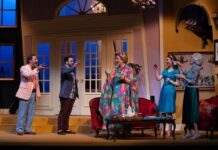This play made me uncomfortable. Profoundly so. But as its creators acknowledged in the epilogue, that was its intention.
Kiinalik: These Sharp Tools, part of the National Arts Centre’s Indigenous theatre program, opened at the Great Canadian Theatre Company on Thursday. Stretched out over nearly two hours of non-stop run time, Kiinalik was powered by ethereal music, spoken word and a twisting narrative which melded the historical with the personal.

While divergent in their origins, both Parry and Bathory’s experiences intersect and have common threads. Their words guide the audience through the history of the north, using a large projector behind them to chart their journey throughout history, highlighting important places and moments in Canada’s history that shaped the south’s perception of the north.
One of the play’s most poignant riffs was critiquing one famous conception of the north: “Northwest Passage” by Stan Rogers, a Canadian folk music legend. Parry remembered a time when the famous Canadian song played out at festivals, where she would sing along with her family along with crowds of festival goers.
But through this play, the loaded language of the original is revisited. In “Northwest Passage,” Rogers sings how he wishes to sail through the Northwest Passage, while “tracing one warm line through a land so wild and savage.”

The star of the show was Cris Derksen, the Cree, Juno-nominated cellist. The swells and swings of tone throughout the play could have easily been washed out with the fact that only two people were on a minimally designed stage, but Derksen’s ethereal, swelling cello filled the room with a haunting tune. Combined with Parry’s delicate guitar playing, layered via looping and the vocals of both Parry and Bathory, the minimal visual performance was elevated by the sound production.
Minimal, that is, until the final act. Parry took a seat and watched on as Bathory donned black facepaint, embracing the spirit of a sex demon, and began to clamber through the seats, in amongst the audience, getting in the faces of the crowdand imitating various sex acts.
It was a bizarre, unsettling finale, but it served to force the “Southern” audience’s perceptions of the north back in their faces. Ultimately, the play represented a rejection of these perceptions, and the last act, although it took me a couple days to recover from the shock, served to nail down the message in the hearts of the audience.
The north is not a “land so wild and savage,” and Kiinalik forces the audience to challenge these historical perceptions.
Featured image provided by Jeremy Mimnagh.






